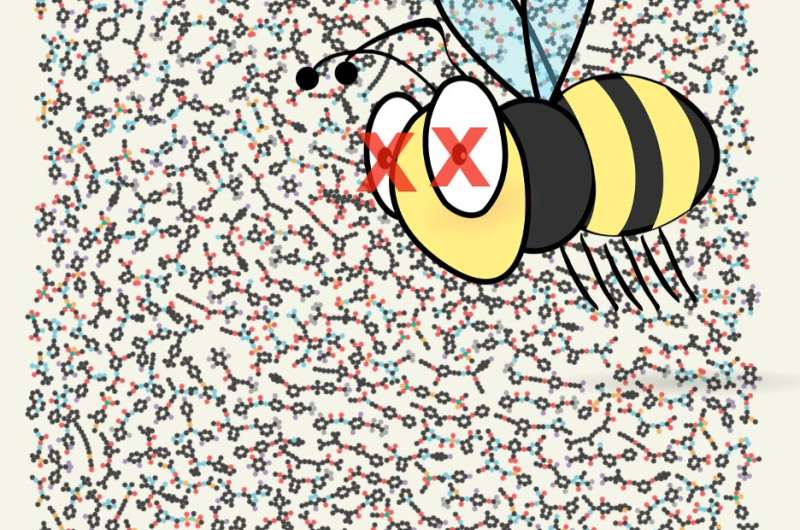
Scientists in the Oregon Point out College College of Engineering have harnessed the power of artificial intelligence to assist secure bees from pesticides.
Cory Simon, assistant professor of chemical engineering, and Xiaoli Fern, affiliate professor of personal computer science, led the challenge, which associated instruction a device discovering model to predict whether or not any proposed new herbicide, fungicide or insecticide would be toxic to honey bees dependent on the compound’s molecular structure.
The results, featured on the deal with of The Journal of Chemical Physics in a special difficulty, “Chemical Style and design by Artificial Intelligence,” are vital due to the fact lots of fruit, nut, vegetable and seed crops depend on bee pollination.
Without having bees to transfer the pollen essential for reproduction, practically 100 business crops in the United States would vanish. Bees’ worldwide economic influence is annually believed to exceed $100 billion.
“Pesticides are extensively employed in agriculture, which raise[s] crop generate and provide meals security, but pesticides can harm off-goal species like bees,” Simon claimed. “And due to the fact insects, weeds, and so on. sooner or later evolve resistance, new pesticides must frequently be produced, ones that don’t damage bees.”
Graduate college students Ping Yang and Adrian Henle applied honey bee toxicity information from pesticide exposure experiments, involving nearly 400 different pesticide molecules, to prepare an algorithm to predict whether a new pesticide molecule would be poisonous to honeybees.
“The design represents pesticide molecules by the established of random walks on their molecular graphs,” Yang said.
A random stroll is a mathematical notion that describes any meandering route, this kind of as on the intricate chemical structure of a pesticide, exactly where just about every phase along the route is decided by likelihood, as if by coin tosses.
Imagine, Yang explains, that you might be out for an aimless stroll together a pesticide’s chemical structure, generating your way from atom to atom by using the bonds that hold the compound jointly. You travel in random directions but hold monitor of your route, the sequence of atoms and bonds that you visit. Then you go out on a distinct molecule, comparing the collection of twists and turns to what you have finished just before.
“The algorithm declares two molecules equivalent if they share a lot of walks with the exact same sequence of atoms and bonds,” Yang said. “Our model serves as a surrogate for a bee toxicity experiment and can be applied to speedily display proposed pesticide molecules for their toxicity.”
Are pesticides utilized in urban and suburban locations harming honey bees?
Ping Yang et al, Classifying the toxicity of pesticides to honey bees through assist vector equipment with random wander graph kernels, The Journal of Chemical Physics (2022). DOI: 10.1063/5.0090573
Quotation:
Scientists acquire computer system design to predict whether or not a pesticide will hurt bees (2022, July 13)
retrieved 17 July 2022
from https://phys.org/information/2022-07-pesticide-bees.html
This doc is matter to copyright. Apart from any fair working for the intent of personal examine or investigation, no
section could be reproduced devoid of the written authorization. The information is delivered for info reasons only.
